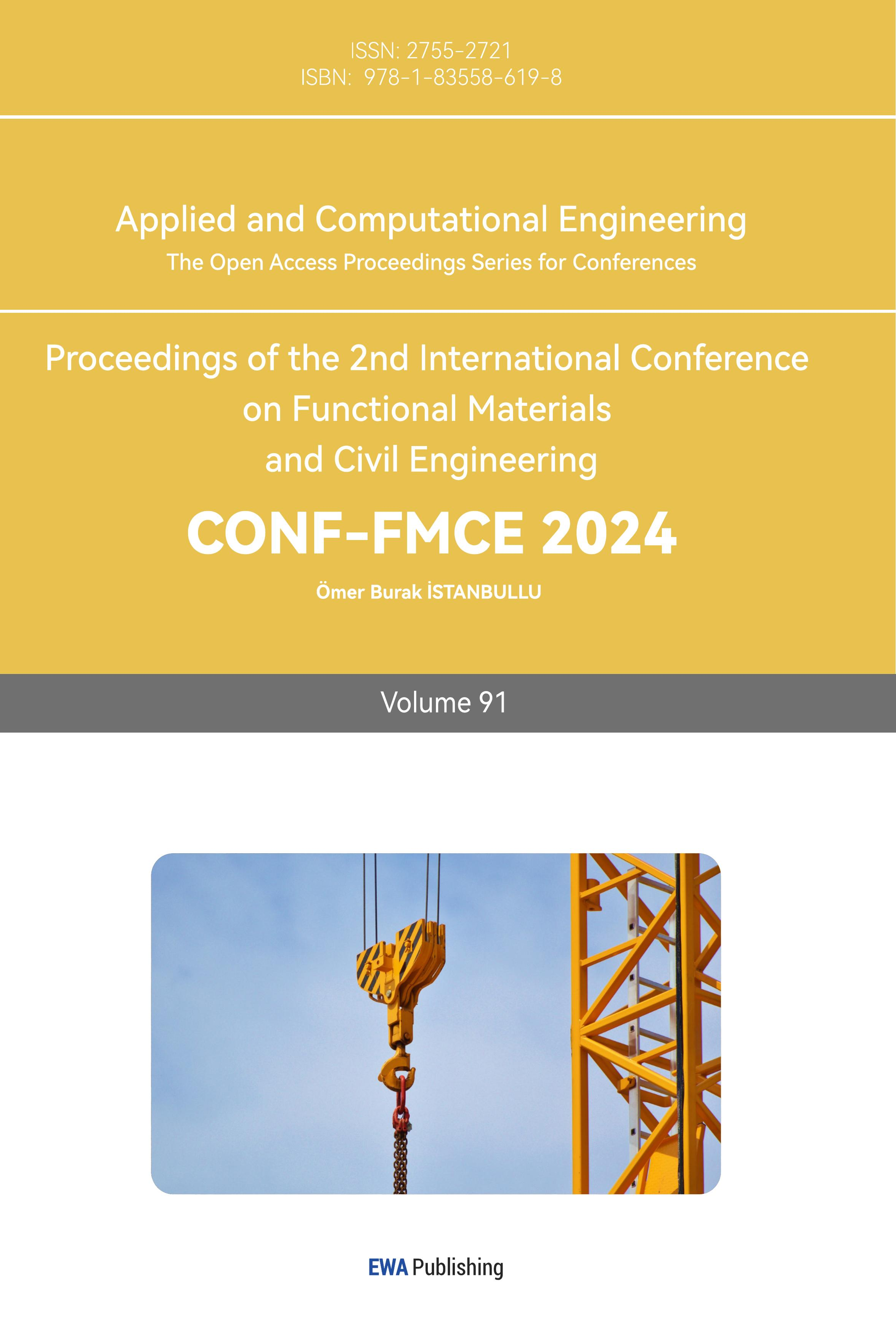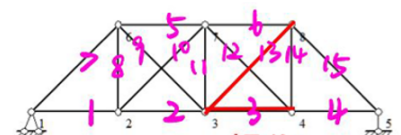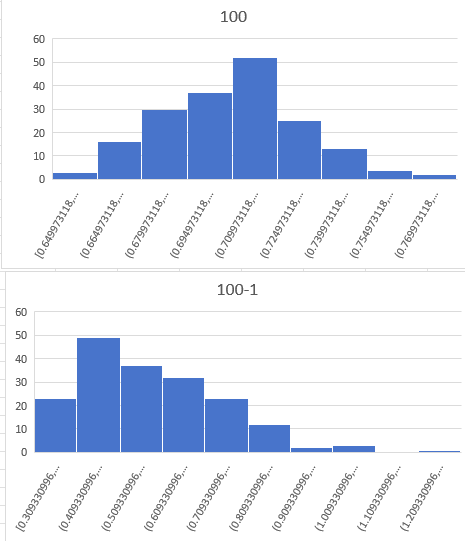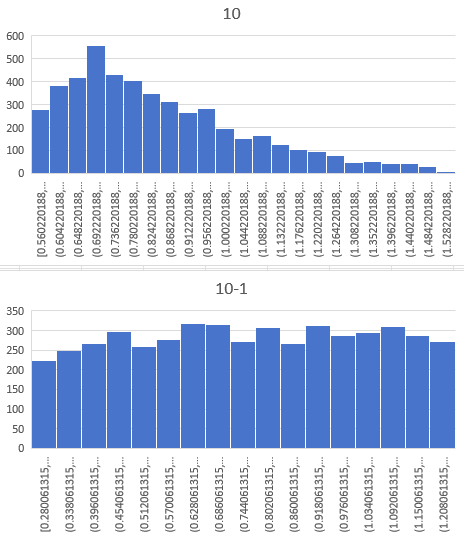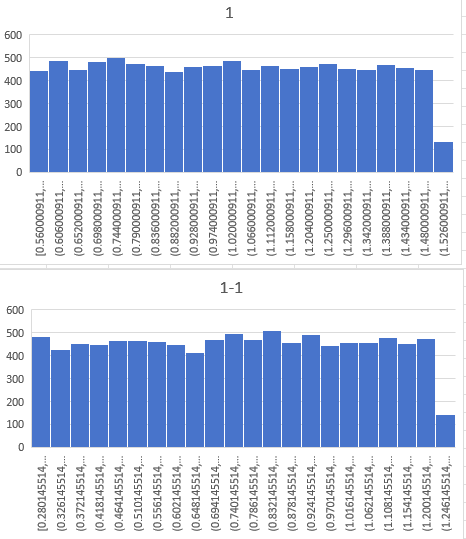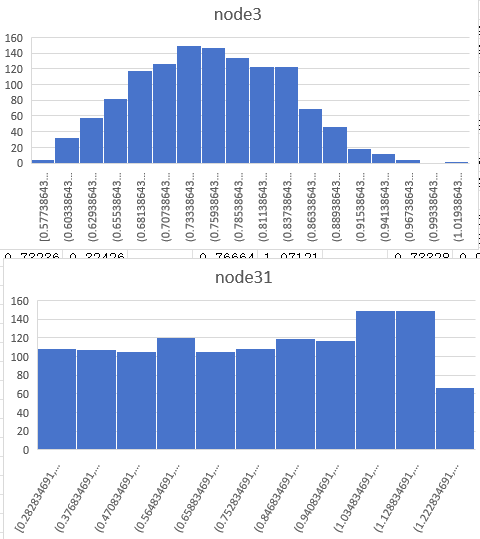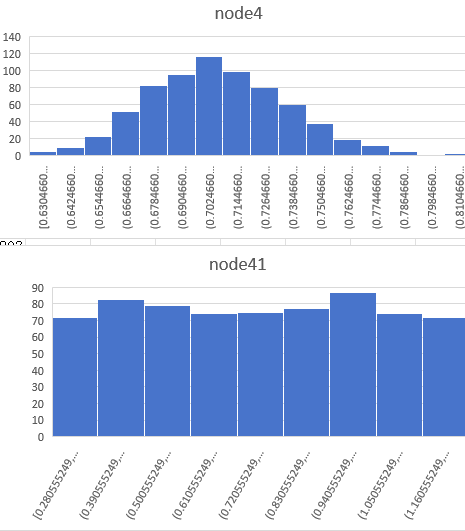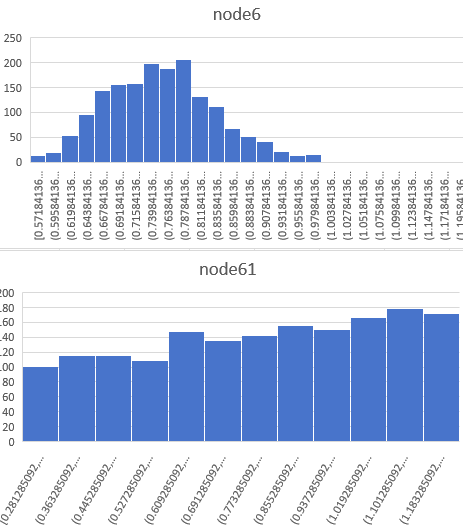1. Introduction
As a common form of engineering structure, truss structure is widely used in bridges, buildings, towers and other fields. It has the advantages of light structure, clear force and convenient construction. However, with the increase of service life and the change of external environment, truss structure will inevitably be damaged and degraded. The reliability of the project is crucial, and it is of great significance to protect people's lives and properties and improve the quality of construction. Over the years, numerous major accidents have been caused by structural damage at home and abroad. For example, in 2018, the Morandi Bridge located in Genoa, Italy, collapsed during a rainstorm, resulting in multiple deaths and injuries [1]; in 2013, the Rana Plaza building in Bangladesh suddenly collapsed during its construction, resulting in the deaths of more than 1,100 people [2]; and in 2020, a residential building located in Tongling, Anhui Province, suddenly collapsed, resulting in the deaths of seven people [3]. All these accidents show that structural deterioration and inadequate maintenance are one of the major causes of building damage. Therefore, timely and accurate assessment of the health status of truss structures is of great significance to ensure structural safety and prolong service life.
In recent years, with the development of computer technology and sensor technology, Structural Health Monitoring (SHM) technology has been widely applied and studied [4]. By monitoring and analyzing the dynamic response of the structure, the location and degree of damage of the structure can be identified. The Bayesian updating method in the SHM technique has gradually attracted the attention of researchers because of its ability to effectively combine the a priori information and the new observation data to improve the accuracy of parameter estimation [5]. For example, Song Chaolin proposed a Bayesian updating method for probabilistic models in the optimization study of large-span cable-stayed bridges, where random variables are defined based on a priori knowledge, and the posterior updating of the variables is continuously performed to grasp the structural state more accurately [6]. Bayesian updating of structures is beneficial for improving the reliability and safety of engineering.
Meanwhile, the Open System for Earthquake Engineering Simulation (OpenSees) as an open source finite element analysis software, is widely used in civil engineering [7]. Its powerful modeling and analysis functions provide a powerful tool for health monitoring and assessment of truss structures. By using OpenSees for finite element modeling of truss structures, the response of the structure under different loading conditions can be simulated, thus providing the necessary data support for Bayesian updating.
This study will take a case study of a super-static structure as an example, aiming to combine the OpenSees finite element analysis software and Bayesian updating method for damage identification of truss structures. A simple regularity investigation is carried out by establishing a finite element model of the truss structure, simulating its dynamic response under different loading conditions, and updating and identifying the structural parameters by combining with the Bayesian updating method in order to explore a more optimal solution for optimizing the truss.
2. Methodologies
2.1. Bayesian update
The research background of Bayesian updating stems from Bayesian statistics, which is a statistical inference method based on Bayes' theorem [8]. Its core principle i.e. we combine a priori probabilities with observed data in order to compute a posteriori probabilities. Nowadays, Bayesian updating can be used to monitor the system state in real time, adjust the control parameters, and predict the future system behavior, which is important for monitoring engineering structures and so on.
And the application of Bayesian updating in engineering structures has significant value, which can be used to combine sensor data and prior knowledge to monitor the health state of the structure in real time and predict possible damage. By continuously updating the estimation of structural health state, abnormal behavior of the structure can be detected in time and corresponding maintenance measures can be taken to prolong the service life of the structure and reduce the maintenance cost, which helps to more accurately assess the reliability level of the structure. At the same time, it helps to find more economical, safe and reliable structural solutions in the design stage, and to improve the efficiency and quality of the design.
2.2. Likelihood function
Likelihood Function is a fundamental concept in statistical inference used to measure the likelihood of an observation occurring for a given parameter value [9]. The likelihood function plays a central role in parameter estimation and model selection. For a parameterized statistical model, the likelihood function is a function of the observed data as a parameter, reflecting the relative likelihood of different parameter values given the observed data.
Formally, if we have a set of observations \( D=\lbrace {x_{1}},{x_{2}},...,{x_{n}}\rbrace \) , and a parameter vector \( θ \) , the likelihood function \( L(θ;D) \) is defined as:
\( L(θ;D)=P(D|θ)=P({x_{1}},{x_{2}},…,{x_{n}}|θ)\ \ \ (1) \)
In this expression, it is the observations' joint probability or probability density given the parameters. Importantly, although is called a "likelihood function", it is not really a probability distribution, but rather a function of the parameters .
2.3. Monte Carlo
In Bayesian updating, the computation of posterior distributions of parameters often involves complex integrals and exploration of multidimensional spaces. The Monte Carlo method is an effective numerical computation technique that utilizes random sampling to approximate complex integrals and probability distributions [10]. The method estimates the probability distribution of parameters by simulating a large number of random samples. In Bayesian updating, Monte Carlo methods are commonly used to sample from the posterior distribution to characterize the parameters' uncertainty. This paper explores the kernel of the methodology i.e., Bayesian updating of hyperstatic truss structures using Monte Carlo methods via OpenSees. This study entails specifying the structure to be studied, converting the actual structure of the truss into a mathematical model using OpenSees, defining the damage scenarios that need to be estimated, and generating a large number of random samples based on the probability distribution of the problem, which are generated using a normal distribution. Then, each random sample is simulated to obtain the corresponding results, the results are statistically analyzed, and the acceptance of new samples is considered based on the response of the true values.
3. Experimental results and discussion
3.1. Research Objects and Overview
In this paper, the case selected for the research object is shown in Figure 1, which consists of 8 nodes and 15 rods, and the member numbers are all reflected in Figure 1 . Define the damaged rod stiffness, rod 3 and rod 13 obey the uniform distribution U (0.56,1.54) and U (0.28,1.26), respectively, and the known stiffness of each rod is shown in Table 1.
|
Figure 1. Subjects of experimental study |
Table 1. Stiffness of each rod
\( rod \) | \( 1 \) | \( 2 \) | \( 4 \) | \( 5 \) | \( 6 \) | \( 7 \) | \( 8 \) | \( 9 \) | \( 10 \) | \( 11 \) | \( 12 \) | \( 14 \) | \( 15 \) |
EA/105kN∙m2 | \( 1.4 \) | \( 1.33 \) | \( 1.4 \) | \( 1.47 \) | \( 1.47 \) | \( 1.54 \) | \( 1.26 \) | \( 1.12 \) | \( 1.05 \) | \( 1.12 \) | \( 1.05 \) | \( 1.26 \) | \( 1.54 \) |
3.2. Finite Element Modeling of Truss Structures Based on OpenSees
(1)model
The model data were processed using OpenSees software, and the truss structure's node coordinates, boundary conditions, material properties, and applied loads were defined by Tcl script. Loads were applied to different locations of the truss structure, and different loads were applied to the same locations to monitor the Bayesian updating of the damaged bars at different points under the loads.
(2)Correlate parameters and point displacements
The parameters of the truss structure model are updated and calibrated by the observed measurement point displacement data, thus improving the accuracy and reliability of the model. By continuously collecting and analyzing the measurement point displacement data, possible damage or deterioration of the structure during use can be detected, so that timely maintenance measures can be taken to extend the structure's service life.
(3)Updating parameters
Updating the parameters can help identify the actual performance of the structure, including material properties, member stiffness, etc.
(4)Creating models that simulate real-life situations
In the modeling and analysis of truss structures, there may be uncertainties in parameters such as material properties, geometric dimensions, and boundary conditions. Through Monte Carlo method, a large number of random samples can be generated to model these uncertainties, thus reflecting the actual structure more comprehensively.
3.3. Research Methodology Processes and Laws
Loads were applied to different locations of the truss structure and different loads were applied to the same locations to monitor the Bayesian updating of the damaged bars at different points under load. The collected data samples were then counted using excel and histograms were created to observe the data samples more clearly.
This investigation did not obtain a clear pattern gap when different loads were applied at member node 8 under relative error. Thus, it was changed to absolute error by varying the load size, and it was seen that the larger the value of load adopted, the better the optimization effect. As shown in Figure 2 , Figure 3 , Figure 4 , the displacement effect is shown for the cases of 100kN, 10kN and 1kN vertical force applied respectively. Comparing with the 10kN and 1kN cases, the optimization effect is better in the 100kN case, not only in terms of the acceptance rate but also in terms of the statistics such as the mean value of the histogram.
|
Figure 2. Optimization effect under 100kN load |
|
Figure 3. Optimization effect under 10kN load |
|
Figure 4. Optimization effect under 1kN load |
Following the application of 100kN vertical force at node 8, comparing the other updates of different node displacements on the damaged rods, it is found that node 4 of this component is optimized best for both rods 3 and 13. As shown in Figure 5 , Figure 6 , Figure 7 , the optimization effect of nodes 3, 4 and 6 on two rods respectively.
|
Figure 5. Effect of node 3 on two-rod optimization |
|
Figure 6. Effect of node 4 on two-rod optimization |
|
Figure 7. Effect of node 6 on two-rod optimization |
Finally, under the absolute error to replace the load added to the node location, monitoring node 4, found that loading at node 3 for a more optimal solution.
Therefore, this investigation adopts loading 100kN vertical force to node 3 and monitoring node 4 as an example to monitor the updating effect on the two rods, and using OpenSees to run again to provide the update of the real displacement situation of the relevant nodes through actual testing, comparing the sample mean and standard deviation, it is obvious to find that this solution has a better updating effect on the lower chord rod 3, while the updating effect on the inclined rod 13 is not good, and the subsequent should be replaced. Other loading schemes, such as applying loads in different directions, should be used to seek a better updating effect on the inclined rods. Meanwhile, the deeper investigation can be combined with the structural mechanics solver, and the principle of virtual work can be applied to better understand the internal force and displacement of the truss.
4. Conclusion
The Bayesian updating method can effectively utilize the observation data to update the parameters of the truss structure model and improve the accuracy of the model. This helps structural health monitoring and damage identification, and provides an important reference for structural design and maintenance.
This paper shows how to build a truss structure model in OpenSees and optimize the model parameters by combining the Bayesian updating method. It also shows the process of exploring the Bayesian updating of more optimal solutions and discovering the simple law with a truss structure as an example, mainly with the loading to node 8 scheme. In the relative error case, the vertical load is defined at node 8 and the load size is changed, and no obvious difference is found; in the absolute error case, the vertical load is defined at node 8 and the load size is changed, and it can be seen that the larger the value of the load is adopted, the better the optimization effect is. Absolute error case, the 100kN vertical load is defined at node 8, monitoring different points displacement, can be found in which node 4 on the optimization of the two rods is the best; 100kN vertical load is defined at different nodes, monitoring point 4, can be found that the load acts on node 3, point 4 displacement on the two rods displacement optimization is the best; loading 100kN vertical load to node 3, monitoring node 4,3 rods optimization better.
This investigation process can be extended to future work on more complex structural systems and a wider range of application scenarios.
References
[1]. Wang X 2018 Modern shift (11) pp 25.
[2]. Huang Z 2022 Human Rights Research (04) pp 65-92.
[3]. Xiang J 2024 China Real Estate News (004).
[4]. Wang N R 2023 Construction Technology (in English) 52(21) pp 33-40.
[5]. Tan J L, Fang S E and Jiang X 2023 Building Structure 53(16) pp 91-97.
[6]. Song C L 2022 Tongji University.
[7]. Fu Z Y, Yin X Q and Wang G X 2023 Journal of Disaster Prevention and Mitigation Engineering 43(06) PP 1463-1475.
[8]. Xiao X, Wang Z Y and Li Q W, et al 2022 Engineering Mechanics 39(S1) pp 336-341.
[9]. Liang F Z, Song Z J and Zhang Y H 2004 Tianjin:Tianjin University Press.
[10]. Jiu Z T and Wang J C 2024 Urban Roads and Bridges and Flood Control (04) pp 228-233+25.
Cite this article
Wang,Z. (2024). Bayesian updating of truss structures using OpenSees. Applied and Computational Engineering,91,33-40.
Data availability
The datasets used and/or analyzed during the current study will be available from the authors upon reasonable request.
Disclaimer/Publisher's Note
The statements, opinions and data contained in all publications are solely those of the individual author(s) and contributor(s) and not of EWA Publishing and/or the editor(s). EWA Publishing and/or the editor(s) disclaim responsibility for any injury to people or property resulting from any ideas, methods, instructions or products referred to in the content.
About volume
Volume title: Proceedings of the 2nd International Conference on Functional Materials and Civil Engineering
© 2024 by the author(s). Licensee EWA Publishing, Oxford, UK. This article is an open access article distributed under the terms and
conditions of the Creative Commons Attribution (CC BY) license. Authors who
publish this series agree to the following terms:
1. Authors retain copyright and grant the series right of first publication with the work simultaneously licensed under a Creative Commons
Attribution License that allows others to share the work with an acknowledgment of the work's authorship and initial publication in this
series.
2. Authors are able to enter into separate, additional contractual arrangements for the non-exclusive distribution of the series's published
version of the work (e.g., post it to an institutional repository or publish it in a book), with an acknowledgment of its initial
publication in this series.
3. Authors are permitted and encouraged to post their work online (e.g., in institutional repositories or on their website) prior to and
during the submission process, as it can lead to productive exchanges, as well as earlier and greater citation of published work (See
Open access policy for details).
References
[1]. Wang X 2018 Modern shift (11) pp 25.
[2]. Huang Z 2022 Human Rights Research (04) pp 65-92.
[3]. Xiang J 2024 China Real Estate News (004).
[4]. Wang N R 2023 Construction Technology (in English) 52(21) pp 33-40.
[5]. Tan J L, Fang S E and Jiang X 2023 Building Structure 53(16) pp 91-97.
[6]. Song C L 2022 Tongji University.
[7]. Fu Z Y, Yin X Q and Wang G X 2023 Journal of Disaster Prevention and Mitigation Engineering 43(06) PP 1463-1475.
[8]. Xiao X, Wang Z Y and Li Q W, et al 2022 Engineering Mechanics 39(S1) pp 336-341.
[9]. Liang F Z, Song Z J and Zhang Y H 2004 Tianjin:Tianjin University Press.
[10]. Jiu Z T and Wang J C 2024 Urban Roads and Bridges and Flood Control (04) pp 228-233+25.





